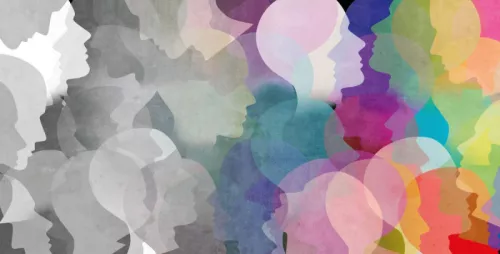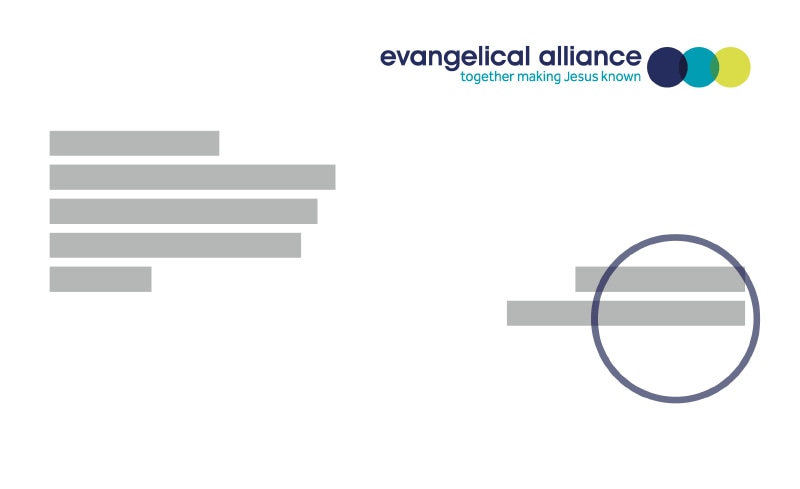Our world is wrestling with various discourses that could easily polarise us. As conversations about age, sex and race continue, what is our understanding of unity? Why is unity fundamentally important in the current climate? And is it possible for the church to give emphasis to these important distinctions but yet unite in Christ?
I believe there are three theological ideas that can help us appreciate the kind of unity God spoke about the Bible. The first starts with creation. One crucial aspect of creation theology is what the biblical accounts of creation tell us about what it means to be human. Creation theology furnishes us with the understanding that we are all created in God’s image, therefore affirming our equality, dignity, value and respect.
God created us all, meaning we all, whether male or female, South Korean or white British, young or old, originate from the same source and are therefore equal before God. The beauty of the biblical accounts of creation is that while God created all of us, He also created our distinctiveness. God created man as well as woman; He created Nigerians as well as Canadians. This is the beauty of God’s creation of humanity: while He created all of us in His image, we are not all the same.
The creation of humanity in the image of God encompasses beauty, respect and human dignity. King David put it this way: “I praise you because I am fearfully and wonderfully made; your works are wonderful, I know that full well” (Psalm 139:14).
Creation is therefore the first theological basis for expressing unity in diversity. In essence, being created by one God in His image means that we are equal. But that creation is expressed in different physical features, skin pigmentation, biology, history and geography, means God also values diversity.
God Himself expresses this unity in diversity in His very being. God is three distinctive persons in the Father, the Son and the Holy Spirit, but yet the godhead is one in essence and purpose.
"The incarnation of Jesus expresses God’s solidarity with humanity in our entire diversity."
The second theological framework for our unity in diversity is the incarnation, that God the Son became human like us. John describes the incarnation as “the Word becoming flesh” (John 1:14).
The incarnation of Jesus expresses God’s solidarity with humanity in our entire diversity. In a way, it is God’s cross-cultural language and cultural intelligence in that He identifies with all of humanity and not some part of it. The incarnation connects God with all people and therefore the diverse expressions of humanity.
The writer to the Hebrews puts it this way: “In the past God spoke to our ancestors through the prophets at many times and in various ways, but in these last days He has spoken to us by His Son, whom He appointed heir of all things, and through whom also He made the universe. The Son is the radiance of God’s glory and the exact representation of His being, sustaining all things by his powerful word. After He had provided purification for sins, He sat down at the right hand of the majesty in heaven” (Hebrews 1:1 – 3).
A further step in understanding the incarnation as a theological basis for unity in diversity is that it also speaks to particularity. By this I mean, the incarnation is contextual; in Jesus becoming one of us, He identifies with the entire human race. Nevertheless, He came to us as a Jewish man born in first-century Palestine.
This is specific and speaks to the heart of how important it is to recognise the various distinguishing characteristics across our shared humanity – sex, race, social class, age – but at the same time the incarnation connects beyond the particular. We have to hold this in tension: God is particular – He is the God and Father of our Lord Jesus Christ – but also through Jesus by the Spirit, God connects with us all.
Finally, reconciliation. The incarnation shows us God’s desire for union with humanity; this reconciliation is achieved through Jesus’ death on the cross. Paul puts it this way: “For He Himself is our peace, who has made the two groups one and has destroyed the barrier, the dividing wall of hostility, by setting aside in His flesh the law with its commands and regulations. His purpose was to create in Himself one new humanity out of the two, thus making peace, and in one body to reconcile both of them to God through the cross, by which He put to death their hostility. He came and preached peace to you who were far away and peace to those who were near. For through Him we both have access to the Father by one Spirit” (Ephesians 2:14 – 18).
Here Paul describes how Jesus’ death on the cross has brought an end to the cultural hostility that was between Jews and gentiles. The death of Jesus on the cross is undergirded by the understanding for the need for vertical reconciliation between humanity and God. But the cross also speaks to horizontal reconciliation between divided communities. Reconciliation gives us a language of pursuing a just, integrated society where all humanity is reconciled with God and each other, resulting in a flourishing society.
The church is meant to be a window into this new human community, offering a glimpse of the life of the age to come. This is why Paul in 1 Corinthians could use the human body as a metaphor to illustrate the importance of different parts of the body — different but ultimately one people, united in Christ Jesus to function together, with every part suffering if one part suffers (12:26).
As the church seeks to live out this biblical description of unity in diversity, we incarnate the gospel for people, embodying in community the reconciliation Jesus came to achieve through His life, death, resurrection and ascension.



